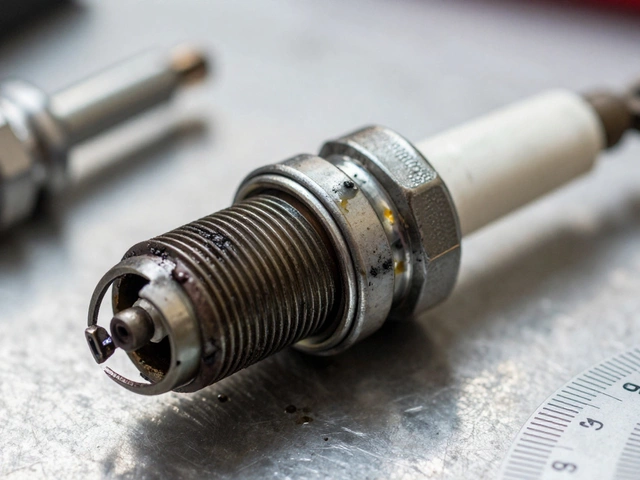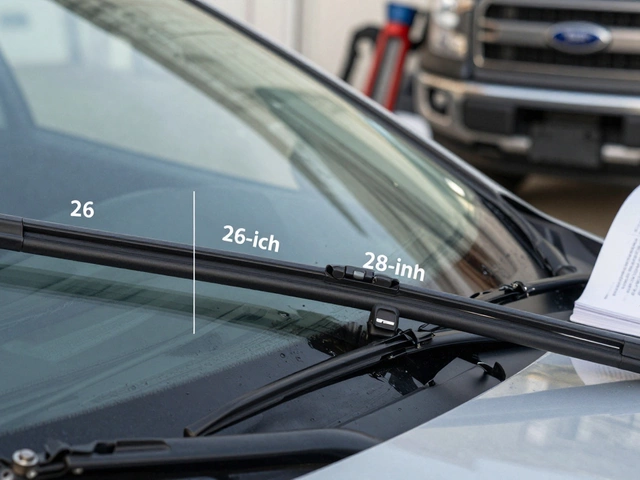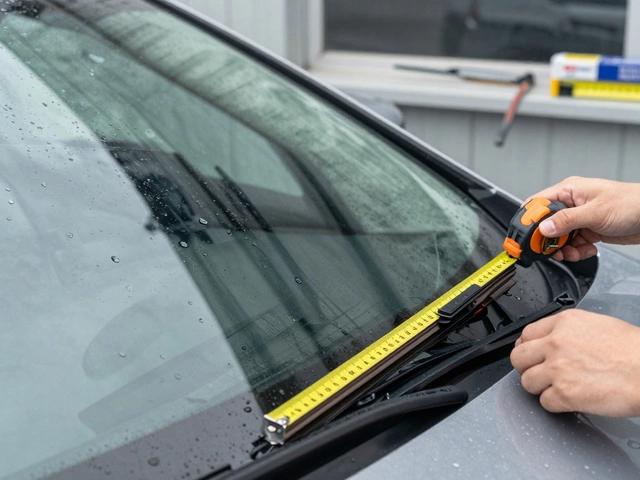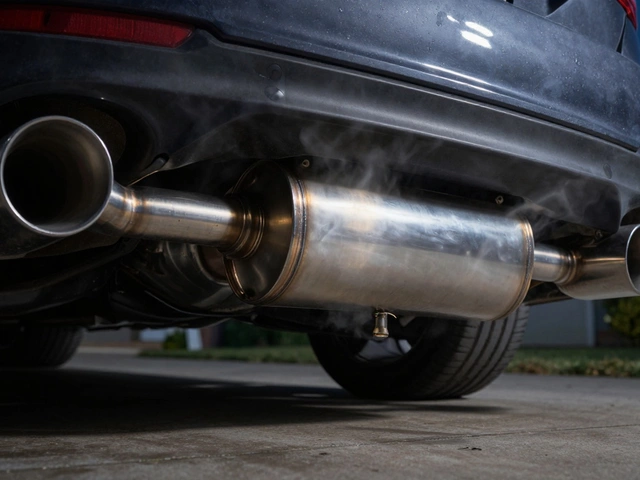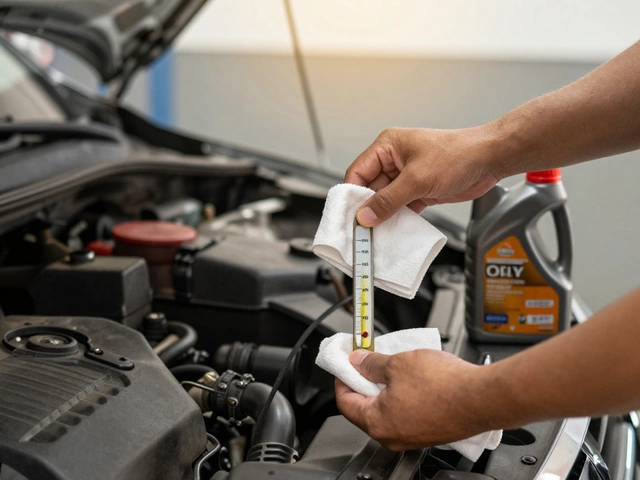Ever wondered if swapping your 4-inch exhaust for a beefy 5-inch will actually give you more power, or if it's just louder? You’re definitely not alone. This is the classic garage debate—some folks swear by that big pipe sound, while others insist it doesn’t make a dent unless you’re pushing big horsepower.
Let’s get one thing straight: the right exhaust size can change how your ride feels and sounds, but it ain't universal. What works like a dream for someone who’s towing a fifth-wheel every weekend might be overkill for someone who just likes a bit more rumble on their daily drive. Here’s what you need to know before laying down cash on shiny new pipes—and how a simple diameter jump might (or might not) shake things up for you.
- Quick Rundown: 4-Inch vs 5-Inch Exhaust
- Performance Gains and Sound Differences
- Backpressure and Flow: What Really Matters
- Daily Driving vs Heavy Towing
- Budget and Installation Considerations
- Choosing the Right Size for Your Truck
Quick Rundown: 4-Inch vs 5-Inch Exhaust
If you’re eyeballing a new exhaust, chances are you’re stuck between the classic 4-inch and that massive 5-inch option. Here’s what’s up: the 4 inch exhaust is what most diesel trucks roll off the lot with after market upgrades. It’s a go-to because it’s proven, fits well, and clears most sound and emission rules. The 5-inch takes things up a notch, especially if you’re chasing that deep, throaty growl or want to crank up your truck’s power for some serious towing.
Let’s stack these two up side by side, so you get the facts, not just opinions:
| Feature | 4-Inch Exhaust | 5-Inch Exhaust |
|---|---|---|
| Pipe Diameter | 4 inches | 5 inches |
| Sound | Deeper than stock, still moderate | Louder, more aggressive, deeper rumble |
| Performance | Adequate for most stock/tuned trucks | Best for heavy tuning or high horsepower |
| Fit & Clearance | Easy fit for most truck frames | Can be tight, may need adjustments |
| Weight | Lighter | Heavier—can sag if not supported right |
| Cost | Usually less expensive | Costs more (material, shipping, install) |
As TruckTrend Magazine puts it:
"Upgrading to a 4-inch system covers 90% of diesel owners’ power needs—only high-horsepower setups truly require the jump to a full 5-inch exhaust."
Keep in mind, both setups work best with straight-through mufflers and proper tuning. A bigger pipe doesn’t magically add horsepower unless you’re really pushing more air or fuel. Also, ground clearance matters. On some lifted rigs, a 5-inch exhaust sits just fine. On lower trucks, it’s more likely to scrape or hang too low if you’re not careful.
Main takeaway: 4-inch is the reliable all-rounder, 5-inch is the showstopper for folks going all-out or craving a louder sound. You’ll want to weigh the look, sound, and actual needs of your truck before picking one because, for most people, bigger isn’t always better.
Performance Gains and Sound Differences
Let’s cut to the chase: will switching from a 4-inch to a 5-inch exhaust actually bump up your horsepower or torque? For most trucks—especially diesels—the answer depends on how much power you’re throwing down. If you’re running close to stock, a 4-inch system already flows more than enough. Real gains from a 5-inch setup usually kick in if you’ve got bigger injectors, upgraded turbos, and heavy custom tuning. In most daily driven or mildly tuned rigs, you’re looking at little to no performance jump on a dyno readout after going bigger.
Now, sound is a different story. Size matters when it comes to how your truck sounds, and 4 inch exhaust versus 5 inch is no exception. A 4-inch pipe tends to give you a crisper, higher-pitched tone—think deep but clean. Step up to a 5-inch, and you get more of that low, thunderous rumble. If you want something that’s going to turn heads at idle or wake up the neighborhood, 5-inch is way more noticeable, especially under load or when you’re getting into the throttle.
If you’re fighting drone in the cab, don’t expect miracles from either size by itself. Mufflers and resonators matter more here. Straight pipe setups—in any size—get loud, fast. Your truck’s other mods, like downpipes and turbos, also change the noise game. So, before you drop money just for the sound, listen to real-life setups or demo videos from trucks similar to yours.
Backpressure and Flow: What Really Matters
This is where the real difference pops up between a 4-inch and 5-inch exhaust. Backpressure is just what it sounds like: extra pressure that builds up in your exhaust system and makes it harder for exhaust gases to leave your engine. Less backpressure usually means more efficient exhaust flow and can lead to more horsepower and better throttle response, but there’s a point where too little backpressure isn’t helpful either—especially on mostly stock setups.
Let’s break it down. Stock trucks and even mild tunes don’t usually push enough exhaust to need a 5-inch system. The 4-inch exhaust will flow plenty for 99% of everyday use, including towing and daily driving. When you crank up the power—say, over 500 horsepower or throwing down heavy fueling upgrades—the 5-inch pipe finally earns its keep by letting all that extra exhaust out faster.
| Exhaust Size | Supported HP (approx.) | Main Benefit | Common Use |
|---|---|---|---|
| 4 inch | Up to ~500 HP | Balanced flow and heat | Daily driving, mild towing |
| 5 inch | 500+ HP | Maximum flow, less backpressure | Heavy hauling, high-output setups |
Here’s something folks get wrong all the time: It’s not always true that bigger is better. If your truck is mostly stock, going up to a 5-inch system won’t magically make more power. In fact, it might even mess with your low-end torque because there’s not enough exhaust velocity to push gases out quickly at lower RPMs. Lower velocity happens when you open up too wide, slowing down gas speed out of the engine.
If you’re trying to keep exhaust temps down while towing heavy, a larger diameter helps dump heat more efficiently. But if you haven’t touched your turbo or fueling, the sweet spot for flow and backpressure sits right with a 4-inch pipe. Want a practical tip? Check your manufacturer’s recommendations and look at what works for trucks with similar power goals to yours.
The 4 inch exhaust gives you the best balance for most street trucks, while the 5-inch is best left to serious high-output rigs or folks chasing the loudest sound possible. Before you decide, ask yourself: Am I building for power, sound, or just looks?

Daily Driving vs Heavy Towing
If you’re rolling around town, hitting the drive-thru or shuttling kids to soccer practice, a massive exhaust might not make much sense. With daily driving, you’re not constantly pushing your engine hard enough to need the extra flow of a 5-inch system. On most stock or mild-tune trucks, jumping up to a 4 inch exhaust already opens things up nicely and gives you a decent rumble. That means smoother airflow, a little less turbo lag, and a noticeable drop in exhaust gas temperatures—good news if you drive in traffic or, honestly, just want your ride to sound cool without rattling the neighbors’ windows.
Now, if you’re hauling a loaded trailer, camper, or heavy construction gear, things change. Heavy tow rigs work their engines a lot harder, producing more heat and exhaust gases that need a quick way out. This is where that 5-inch pipe starts making more sense. Less exhaust backpressure helps keep those EGTs in check, especially on steep grades or long highway runs when your foot’s to the floor. Some long-haulers say their trucks actually run cooler on tough pulls after upgrading to 5-inch. You’ll also hear a deeper, throatier note—something you either love or hate depending on your noise tolerance.
But don’t get carried away thinking bigger is always better. If you’re running mostly stock power, the jump to 5-inch won’t do much besides give you a louder truck and maybe a little drone in the cab. If you’ve got a serious tune, bigger injectors, or aftermarket turbos—then 5-inch gives you room to grow without choking off your upgrades.
- City drivers or commuters: 4-inch is usually plenty, easier to install, and won’t drone as much.
- Heavy or constant towing: 5-inch helps with heat, flow, and engine life if you’re working that engine hard and often.
- If you split the difference (tow a few times a year, otherwise daily drive): Go 4-inch and don’t look back unless you plan a big power build.
Budget and Installation Considerations
Let’s be real—jumping from a 4-inch to a 5-inch exhaust isn’t just about performance; it can hit your wallet harder than you might think. Generally, 4-inch kits are more common and have more competition, so prices are usually lower. A full 4-inch turbo-back system for a diesel truck can often be found in the $350 to $600 range, depending on material (aluminized vs stainless) and brand. Step up to a 5-inch system and you’re looking at prices running from $450 up to $900, sometimes more if you want top-notch stainless and fancy tips.
The bigger the pipe, the trickier the install, especially on older trucks or those with extra components underneath. A 5-inch exhaust might require you to trim or move heat shields, reroute wires, or even ditch the spare tire on some short wheelbase trucks. Shops usually charge more labor for 5-inch systems, not just because of the bigger size, but also because of the extra hassle. DIY folks should budget a solid afternoon in the driveway, at least.
Here’s a quick breakdown comparing key purchase and install numbers between 4-inch and 5-inch exhausts:
| Aspect | 4-Inch Exhaust | 5-Inch Exhaust |
|---|---|---|
| Average Kit Cost | $350 – $600 | $450 – $900 |
| Installation Time (DIY) | 2–3 hours | 3–5 hours |
| Shop Labor Cost (US Avg.) | $150 – $350 | $300 – $500 |
| Material Options | Aluminized, Stainless | Mainly Stainless |
| Vehicle Fitment Issues | Few | Possible on short beds, duallys |
If you’re set on the 4 inch exhaust, you won’t have as many surprises when it comes to mounting hardware, hangers, or pipe clearance. It’s built to fit most trucks, right out of the box. With 5-inch, sometimes you run into clearance problems, and a muffler shop may have to custom-bend or weld extra pieces. That’s more expense and more time off the road.
Last thing—don’t sleep on the hidden costs, like having to replace or move aftermarket goodies (airbags, hitches, or big fuel tanks). And yes, shipping bites too: 5-inch pipes are huge and heavy, so expect a fat shipping bill if your supplier doesn’t offer free freight.
Choosing the Right Size for Your Truck
When it comes time to pick between a 4-inch and a 5-inch exhaust, it's not just about picking the biggest pipe on the shelf. The truth is, what suits your buddy’s truck might not work out for you at all. It really boils down to how you use your truck, your horsepower goals, and even your local laws.
Most folks running near-stock or mildly tuned diesel trucks stick with a 4 inch exhaust. This isn’t just guesswork—almost every big exhaust brand agrees that 4-inch flows plenty for 400-600 horsepower builds, which is more than most daily drivers or mild tow rigs push. But if you're building up to serious power—think over 600 horsepower, heavy tuning, or racing—then a 5-inch pipe’s extra flow might finally make sense. Otherwise, you might just end up with a louder cab and a more expensive install for no real gain.
There’s also noise to think about. A 5-inch exhaust isn’t just deeper; it’s usually quite a bit louder, especially if you run it straight or with a minimal muffler. Not everyone’s neighbors love that. And if you drive long distances or haul family often, the drone can get old fast. Plus, some states have noise rules that could have you pulling your exhaust back off sooner than you’d like.
If you work your truck—towing, climbing hills, carrying heavy stuff—a bigger pipe can help lower exhaust gas temperatures (EGTs), which is safer for your engine. But again, for typical towing under 400 horsepower, a 4-inch system almost always keeps things cool enough if the rest of your parts are in good shape.
To make it easier, here's how the numbers shake out for most trucks:
| Exhaust Size | Recommended Power Range | Main Pros | Main Cons |
|---|---|---|---|
| 4 Inch | Up to 600 HP | Quiet(er), fits more trucks, slightly lighter | Maxes out if you're going wild with tuning |
| 5 Inch | Above 600 HP or extreme cooling needed | Deeper sound, best flow at high power | Louder, heavier, usually pricier |
If you're still stuck, here’s what actually helps make the call:
- If you're under 600HP and mostly daily driving or light towing, save cash and sanity—go 4-inch.
- If you’re after max power at the track or oversized tunes for big towing, 5-inch can give a slight edge.
- Want more sound? 5-inch does that, but be ready for extra cabin noise.
- Check local laws about noise and emissions before you upgrade. No one likes to get ticketed for an exhaust.
Bottom line: match your exhaust to your actual setup and goals, not just what looks cool or what worked for the guy next door. Your ears—and your wallet—will thank you.



